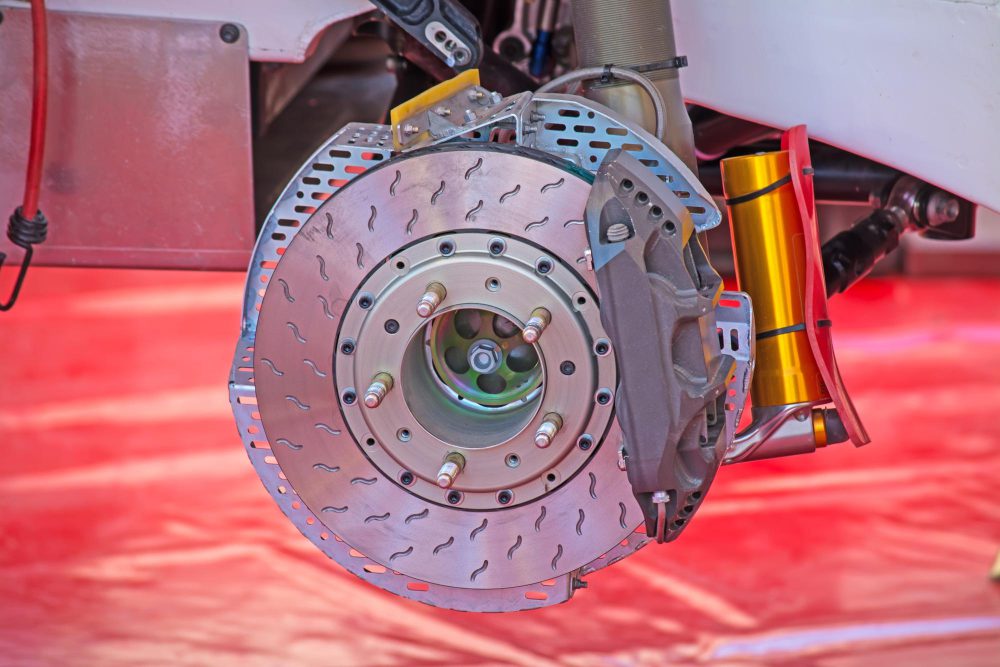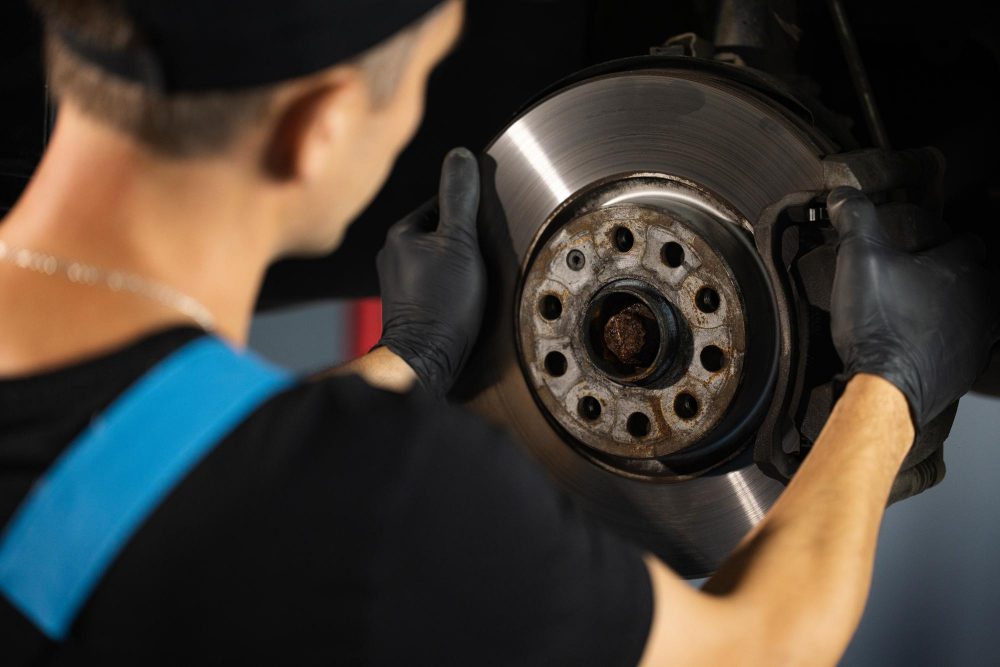Is EBS better than ABS?
Introduction
When it comes to vehicle safety, two important systems that play a crucial role are Electronic Brakeforce Distribution (EBS) and Anti-lock Braking System (ABS). These systems have revolutionized the way we brake and drastically improved road safety. But the question remains: is EBS better than ABS? In this article, we will explore the differences between these two braking systems, their benefits, and determine which one comes out on top.
The Basics of EBS and ABS
ABS: The Anti-lock Braking System (ABS) is a safety feature that prevents the wheels from locking up during braking, allowing the driver to maintain steering control. It works by modulating the brake pressure on each wheel individually, ensuring that the wheels continue to rotate, preventing skidding or loss of traction.
EBS: Electronic Brakeforce Distribution (EBS) is an advanced braking system that builds upon the foundation of ABS. In addition to preventing wheel lock-up, EBS also distributes the braking force between the front and rear wheels, optimizing braking performance and enhancing stability during emergency stops or when carrying heavy loads.
The Advantages of ABS
ABS has been a standard feature in vehicles for several years now, and its benefits are well-established. Some key advantages of ABS include:
- Improved Steering Control: By preventing wheel lock-up, ABS allows the driver to maintain steering control even during hard braking or on slippery surfaces.
- Reduced Braking Distances: ABS significantly reduces braking distances as compared to traditional braking systems, allowing drivers to stop their vehicles more effectively.
- Enhanced Stability: Since ABS prevents wheel lock-up, it ensures that the wheels continue to rotate, improving vehicle stability and reducing the risk of skidding or losing control.
The Benefits of EBS
While ABS offers significant advantages, EBS takes braking technology a step further with additional benefits:
- Improved Load Distribution: EBS automatically adjusts the brake force between the front and rear wheels based on the vehicle’s load distribution. This ensures that the brakes are applied optimally, enhancing stability and control.
- Reduced Wear and Tear: By distributing braking force effectively, EBS helps to minimize wear and tear on the brake pads and discs, resulting in extended component life and reduced maintenance costs.
- Enhanced Safety: The combination of ABS and EBS provides an even higher level of safety. The ability to distribute braking force according to the load and maintain steering control during emergency stops makes EBS a superior choice for road safety.
“EBS takes braking technology a step further with improved load distribution and reduced wear and tear on brake components.”
Is ABS and EBS the same?
When it comes to braking systems in vehicles, confusion often arises between Anti-lock Braking System (ABS) and Electronic Brakeforce Distribution System (EBS). Although they both serve the purpose of enhancing vehicle safety, there are some key differences between the two.
ABS – Anti-lock Braking System
The Anti-lock Braking System (ABS) is a safety feature that prevents the wheels from locking up during braking, particularly in emergency situations. It uses sensors to monitor wheel speed and if it detects that a wheel is about to lock, it automatically modulates the brake pressure to that wheel, allowing it to rotate and maintain traction with the road surface.
ABS is especially valuable when driving on slippery or uneven surfaces as it significantly reduces the risk of skidding and loss of control.
EBS – Electronic Brakeforce Distribution System
On the other hand, the Electronic Brakeforce Distribution System (EBS) is designed to optimize the distribution of braking force between the front and rear wheels. It takes into account various factors such as vehicle load, weight distribution, and road conditions. By adjusting the braking force on each wheel individually, EBS ensures maximum stability and control during braking.
EBS works in conjunction with ABS, utilizing the existing sensor data to determine the ideal brake force distribution. It is commonly found in modern vehicles equipped with ABS.
Differences and Benefits
While both ABS and EBS contribute to vehicle safety, their primary functions differ. ABS focuses on preventing wheel lock-up, reducing skidding and maintaining steering control, while EBS primarily optimizes brake force distribution for improved stability.
Here’s a comparison between ABS and EBS:
| ABS | EBS |
|---|---|
|
|
It is important to note that while ABS is widely available and required in most vehicles, EBS is typically found in larger commercial vehicles due to its specific benefits for complex braking systems.
To summarize, ABS and EBS are related but distinct systems within a vehicle’s braking system. While ABS prevents wheel lock-up and skidding, EBS optimizes brake force distribution for improved stability. Both systems play vital roles in enhancing vehicle safety.
What is the difference between ABS and EBS brakes?
The automotive industry has seen significant advancements in braking technology over the years. Two commonly used braking systems are the Anti-lock Braking System (ABS) and Electronic Braking System (EBS). While both systems serve the same purpose of enhancing vehicle safety, there are some notable differences between them.
1. ABS Brakes
ABS brakes were introduced in the 1970s and have become standard in most modern vehicles. This system prevents the wheels from locking up during sudden braking or on slippery surfaces. ABS uses wheel-speed sensors to detect when a tire is about to lock up and selectively applies and releases the brake pressure, ensuring better control and stability.
2. EBS Brakes
EBS brakes, on the other hand, are an evolution of ABS technology and offer additional features. EBS integrates electronic controls with the braking system, enabling more advanced functionality. It not only prevents wheel lock-up but also provides improved load sensing, traction control, and stability assistance.
3. Key Differences
One key difference between ABS and EBS brakes is their operating pressure source. ABS brakes rely on hydraulic pressure from the brake pedal, while EBS brakes employ an electronic control unit (ECU) that regulates the pressure electronically. This allows for faster response times and greater precision in EBS-equipped vehicles.
Another difference is the monitoring capability. EBS brakes continuously monitor various parameters such as wheel speed, vehicle load, and road conditions. This real-time monitoring enables EBS to adapt the braking force according to the situation, resulting in more precise and efficient braking performance.
4. Benefits and Drawbacks
Both ABS and EBS braking systems offer significant safety benefits. They help prevent wheel lock-up, reduce stopping distances, and enhance vehicle stability. ABS brakes are widely available and are suitable for most everyday driving scenarios.
On the other hand, EBS brakes provide enhanced control and performance, especially in commercial vehicles such as trucks and buses. The additional features offered by EBS, such as load sensing and traction control, make it particularly advantageous for heavy-duty applications.
5. Conclusion
In summary, while ABS and EBS brakes share a common goal of improving vehicle safety, the key differences lie in their operating pressure source, monitoring capabilities, and additional functionalities. ABS is more widely used and suitable for regular passenger vehicles, while EBS offers advanced features mainly tailored for commercial vehicles.
Understanding the differences between ABS and EBS brakes allows consumers and fleet owners to make informed decisions when choosing vehicles or considering brake system upgrades.
- ABS brakes: Prevent wheel lock-up, improve control and stability.
- EBS brakes: Includes ABS features and offers advanced functionalities like load sensing and traction control.
So, whether you drive a regular passenger vehicle or operate a heavy-duty commercial vehicle, both ABS and EBS brakes contribute to safer journeys on the road.



